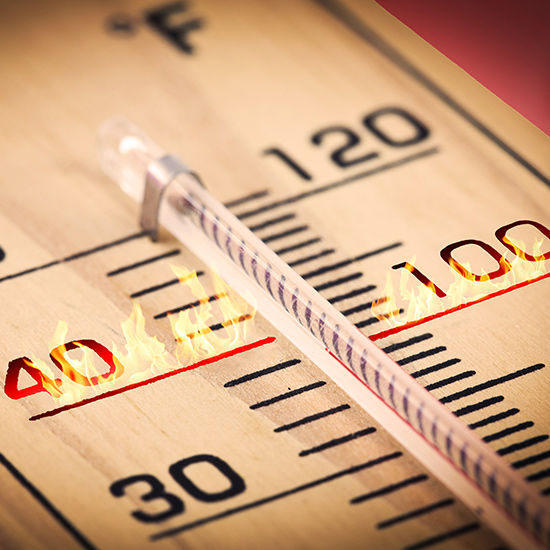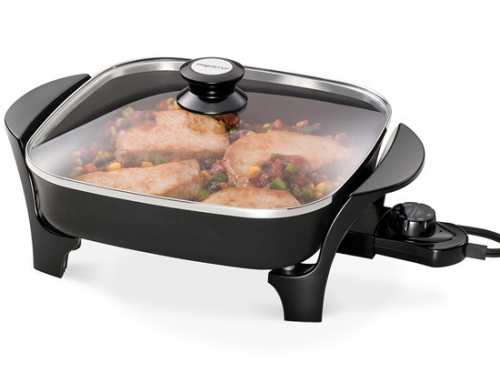 With summer finally heating up across the continent drivers are having to deal with a lot of scorching temperatures that they just simply are not used to.
With summer finally heating up across the continent drivers are having to deal with a lot of scorching temperatures that they just simply are not used to.
If you’re from Winnipeg, our average seasonal temperatures hover around 79 degrees, so heading to Florida, for example, with an average temperature of 90 degrees can definitely take its toll. Not only is it hotter, it’s all together a different type of heat. In Florida it’s wet and humid, imagine being wrapped in a hot wet towel.
When working in these conditions it is important to pay attention to your body and be cautious of Heat Exhaustion and not let it develop into Heatstroke.
What is Heatstroke?
Heatstroke is a condition caused by your body overheating, usually as a result of prolonged exposure to or physical exertion in high temperatures. Unloading that trailer in 90 degree weather is definitely putting you at risk.
What are the Signs of Heatstroke?
It is important to know the signs of heat stroke and it is even more important not to ignore them. Heatstroke is one of those urgent medical conditions that requires immediate medical treatment. Left untreated, heatstroke can quickly damage your brain, heart, kidney and muscles.
- Incredibly Hot Skin/High Body Temperature – is often one of the first signs of heatstroke. Incredibly hot, red skin and an internal body temperature of 104 degrees or higher.
- Dizziness and Fainting – are the next most common symptoms of heatstroke. If you’ve spent several hours in the sun and you experience this symptom, contact your doctor immediately.
- Extreme Fatigue – spending the day in the sun can be exhausting, however, this, combined with any of the other symptoms listed, may be a sign of heatstroke.
- Nausea and Vomiting – Nausea is an indication that your heat exhaustion has progressed into heatstroke. Drink plenty of water and seek out some air conditioning to help you cool down. Should your nausea develop into vomiting, you’ve definitely developed Heatstroke and it’s time to get some medical assistance.
- Rapid Heartbeat – unless you’re purposely exerting yourself (i.e. exercising) a rapid heartbeat is not something you want to take chances with. When combined with other symptoms on this list, you guessed it . . . it’s time to go to the hospital.
- Altered Mental State or Behaviour – confusion, agitation, slurred speech, irritability, delirium, difficulty thinking, remembering or focusing may be an indication of heatstroke.
- Seizures – are a very serious (and very dangerous) symptom of heatstroke. This symptom often presents itself abruptly and offers few warning signs.
- Lack of Sweating – One of the differences between heat exhaustion and full-blown Heatstroke is a lack of sweating. If you’ve spent too much time in the sun, you’ll likely feel very hot and perspire a lot. However, if you’re suffering from Heatstroke, your body will not produce sweat, despite feeling incredibly hot.
- Severe Headache – if you’ve spent time in the sun and you’re experiencing a severe headache, you may be suffering from heat stroke. It’s common for individuals to have a slight headache after spending time outdoors in the summer but a severe headache, combined with at least one other symptom on this list is an indication you need to seek medical attention immediately.
What to do if you are Suffering from Heatstroke
The rule is simple, if you are experiencing these symptoms, seek immediate medical attention. Heatstroke is no laughing matter and requires immediate attention, so you shouldn’t even be driving yourself to the hospital. While waiting for treatment – waiting for the ambulance or during transport when someone else is taking you to the emergency room, it is important to start treatment right away.
- Get into the shade or indoors, if in a vehicle, get the air conditioner going.
- Remove excess clothing.
- Cool down with any means necessary – use a cool shower, a cool tub, spray down with a garden hose, use a fan, air conditioner, place ice packs or cool wet towels on the head, neck and armpits.





